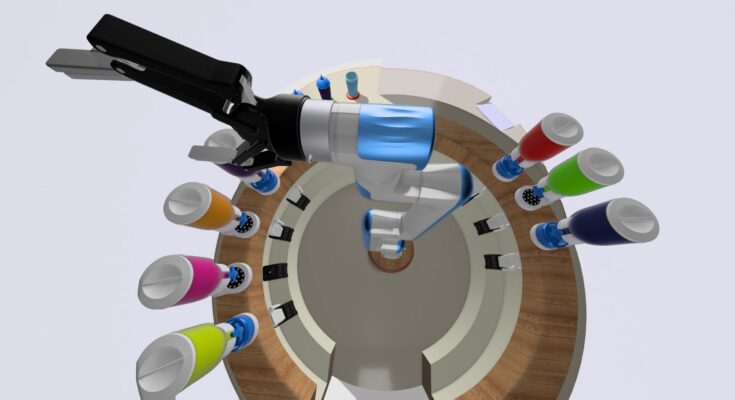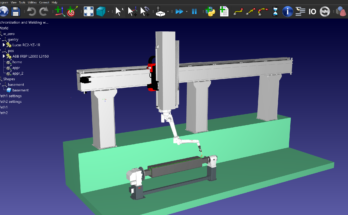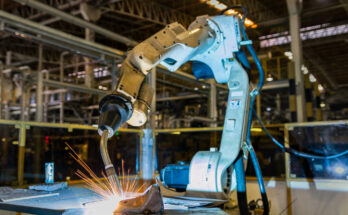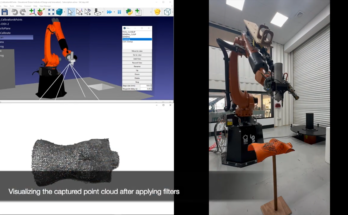How can robotic technology help with making juice? The ROBOTTLE project, led by Ahmed Tamer and Omar Abdelaziz, sets out to change the food and beverage industry.
In the constantly developing food and beverage industry, companies are always looking for new ways to keep up with the pace of technology. People are looking for ways to reduce the chasm between online convenience and the physical restrictions of production and delivery of products.
Robotics in this industry is growing at an impressive speed. Food and beverage industry automation increased 25% between 2020 and 2021.
As in many industries, the Covid-19 pandemic further sped up growth as companies looked for ways to minimize human contact.
One project from an aerospace AI team used RoboDK to propose a solution for automated juice production…
Introducing ROBOTTLE…
The ROBOTTLE project, led by Ahmed Tamer and Omar Abdelaziz, the project’s mission is to pioneer the integration of advanced technologies into the food and beverage industry through robotics and AI.
By focusing on juice production, the team aims to empower businesses and employees to add more creativity and better customer service to their operations.
A Service-Optimized Robot Juice Maker?
Imagine waking up early in the morning, the sun’s light pouring through your window…
You go to your local juice shop for a rejuvenating juice or smoothie, fully expecting you will have to stand in a long queue while you wait for your drink.
But, instead of a long wait, you see that the workers in the shop are working with impressive speed and efficiency. Behind the counter, a robot juice maker operates alongside the humans, helping them to deliver custom-made juices quickly.
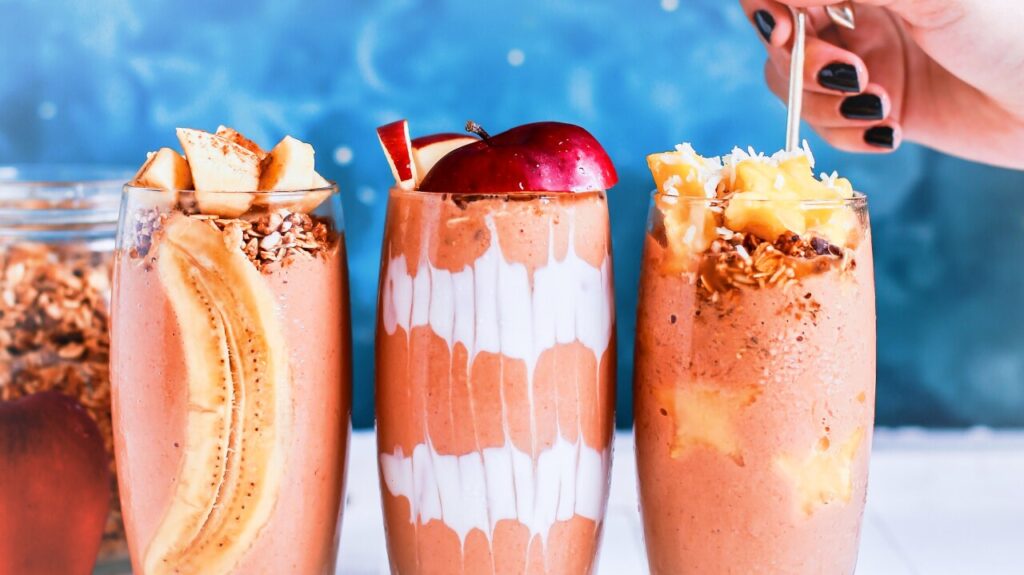
ROBOTTLE is a proof of concept to show this vision to the world. By using existing robotic hardware and programming through RoboDK, Ahmed Tamer’s team aims to help juice shops, cafes, and restaurants to adopt automation quickly and easily.
Such a system can benefit shops in several beneficial ways, including improved personalization, efficiency, and consistency.
Tamer explains: “The ideal users of this feature are those who not only dream and design but also yearn to witness their creative visions come to life, seeing their handiwork function seamlessly and effectively in real-world scenarios.”
The Team’s Robotic Setup
ROBOTTLE uses combines a selection of robotic hardware and software technologies to create an automated juice-making system.
The key hardware components of the system include:
- The Kassow KR0810 robot as the core autonomous element. This lightweight and compact 7-axis robot has a reach of 850 mm and a payload of 10 kg.
- Semi-autonomous juice-making machines.
- Sensors and end-of-arm tools to detect and manipulate the ingredients.
- A mobile phone with the system’s app.
The key software components of the system include:
- RoboDK to simulate and program the system.
- Shaper3D CAD software to model the components.
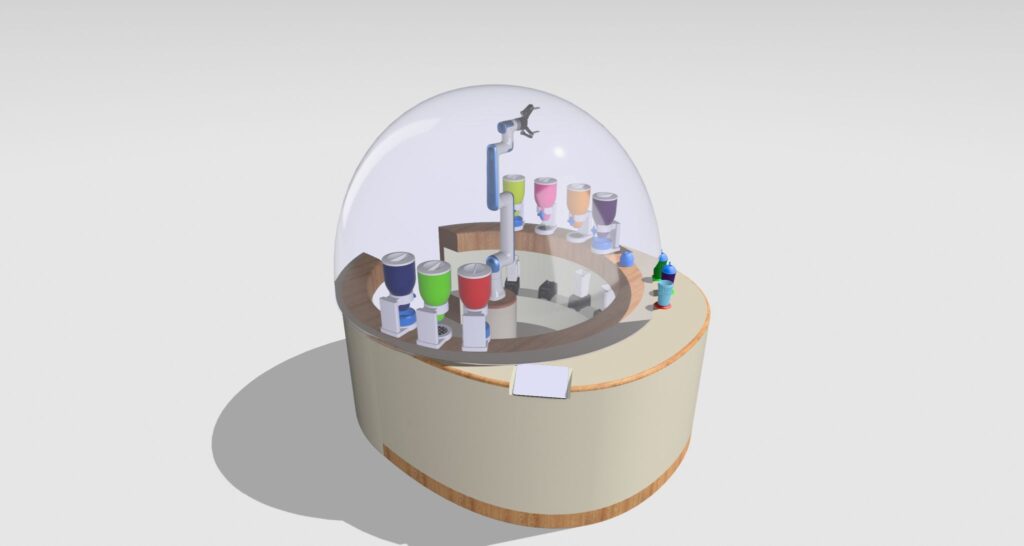
Making the Public Part of the Journey
A challenge that the team faced was how to make the public and end users an integral part of their journey.
The goal wasn’t just to create a functional juice-making robot… the team wanted to help people be more creative with their juice creations.
Tamer says:
“We believe in the power of inclusivity and wanted everyone to witness the mechanics of how our robot functions. Our vision is to seamlessly integrate innovation and technology in the food and beverage industry by helping juice stores, as a first step, to reach the global community.”
To achieve this, the team prioritized their system’s ease-of-use.
The operation of the application is very straightforward. The user simply selects their personalized drink order using the phone application. Then, the robot gets to work. In less than a minute, the drink is ready!
How They Used RoboDK
RoboDK played a crucial role in the project and animating the team’s vision. By using the RoboDK Python API, they could combine the kinematics and dynamics of the robot with their user-friendly interface.
Tamer explains:
“Having worked with various robotic software platforms, I found that RoboDK’s user-friendly interface brought us closer to bringing ROBOTTLE to life.”
The application used Shapr3D to intricately craft the components of the system.
From here, RoboDK’s impressive compatibility of CAD software components came into play. It allowed them to seamlessly import these components, using standard CAD file formats, into the robotic simulation. From here, programming the robot was a simple task.
As a result, RoboDK was not merely a tool, but a vital component in the project’s success. It bridged the gap between conceptualization and realization of the team’s vision.
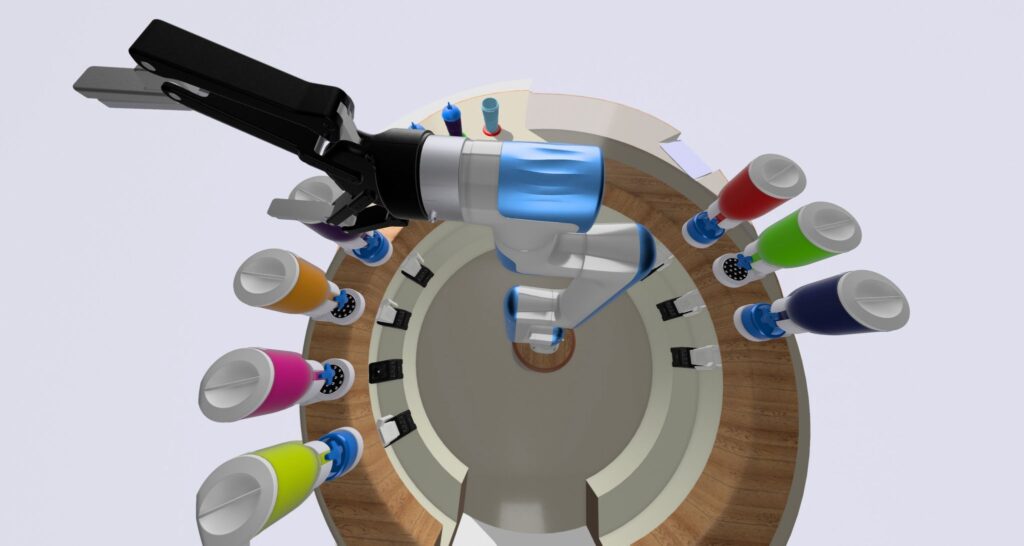
Future Plans
ROBOTTLE’s journey to create a robust juice-making robot doesn’t end at simulation.
Tamer and the team are working on various aspects of the deployment.
A recent development includes the development of a cleaning procedure, helping to keep all components of the system in sanitary working order.
The team has also ventured into robotic coffee making, building on the same techniques and ideas they have explored with juice making.
Users and members of the public remain at the very center of their operations.
As the team announced recently:
“We want to extend our thanks to the amazing people, pioneers, innovators, and visionaries who showed us support. Your confidence in our mission fuels our innovation and drives us forward. We are excited about what we will continue to achieve together and thank you for believing in us.”
What aspects of food and beverage production could you automate? Tell us in the comments below or join the discussion on LinkedIn, Twitter, Facebook, Instagram, or in the RoboDK Forum.. Also, check out our extensive video collection and subscribe to the RoboDK YouTube Channel

